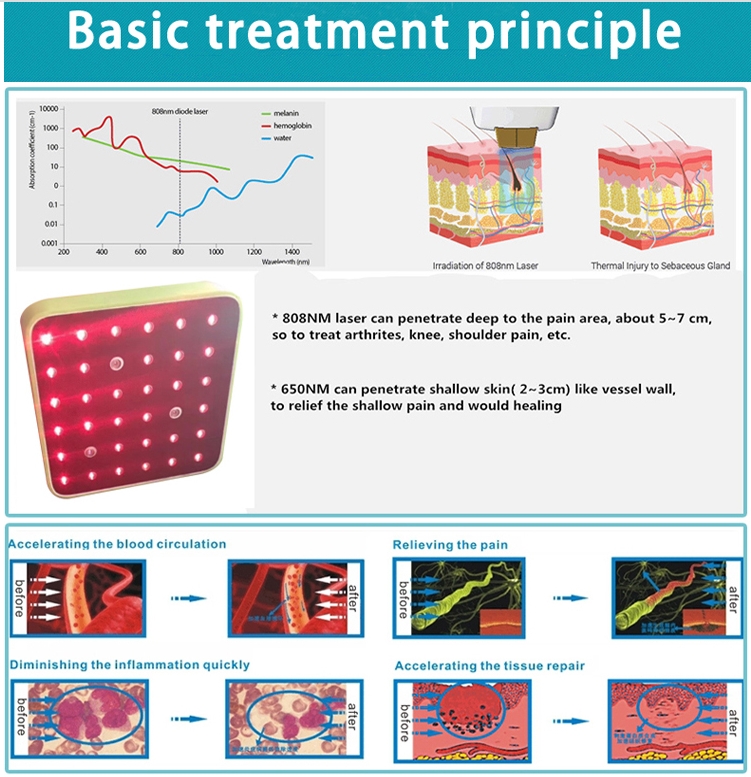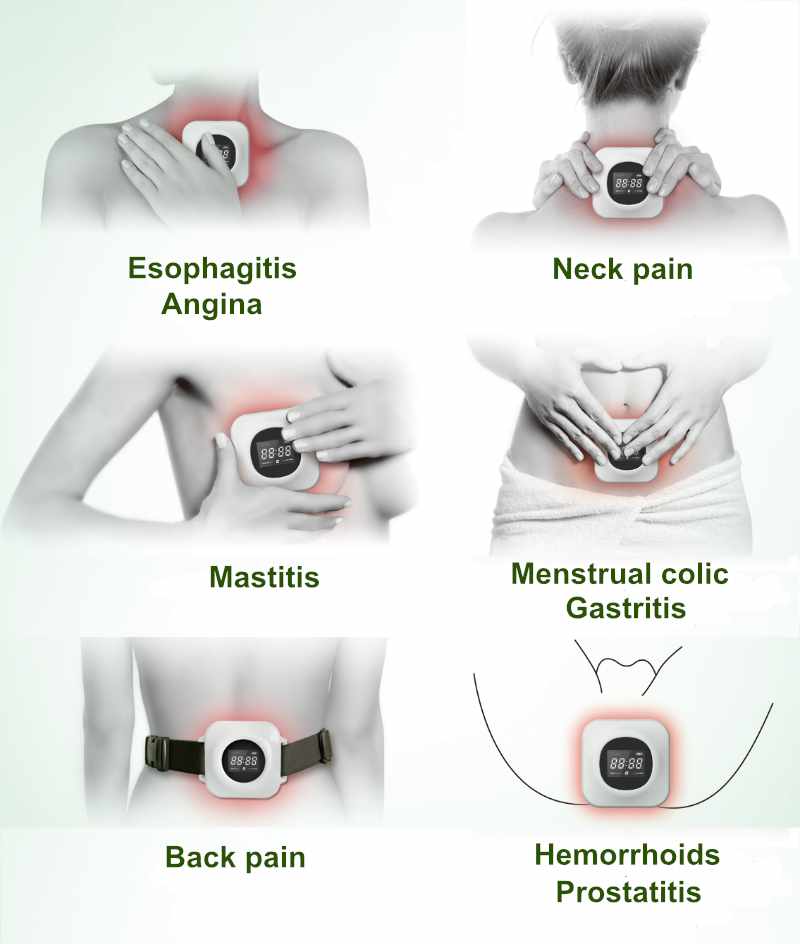The LF2 is a stand-alone class 3R portable laser that can be worn directly on the skin via a cover and a strap. It is composed of 33 lasers of 650nm square and three lasers of 808nm for a complementary action in depth. It therefore brings together the best of these 2 fundamental frequencies of radiation used for this type of therapy. For more information on this therapy mode, please refer to the Introduction part of this section regarding therapeutic applications that use the laser. The device works autonomously with a rechargeable battery.
Application areas:
Its fields of application are the same as the LF1. It has more laser diodes (33 of 650nm and 3 of 808nm) than the LF1. The average time for a daily session is 15 minutes (up to 3 times a day). The appliance heats up during use. It is therefore not a heat effect generated by the light of the laser on the body but the device which by its operation heats without presenting a notion of dangerousness. 3 laser diodes in the center of the device (see photo) are in the non-visible spectrum of 808nm. It is therefore not a failure of the device but only an invisible functionality. Remember to remove the protective film on the diodes when receiving it.
- Body pain: neck pain, back pain, kidney pain, arthritis, muscle pain, rheumatoid arthritis, knee pain, fibromyalgia, tendonitis, redness, swelling, morning stiffness, neck pain and lower back pain.
- Wound healing
- Rehabilitation after sports injuries
- Prostatitis
- Menstrual colic
- Esophagitis
- Mastitis
- Hemorrhoids
- Tennis elbow
- Tendonitis
- Bursitis
- Carpal tunnel syndrome
- Fibromalgia
- ...

Therapeutic theory:
The cold laser is applied to biology. It does not damage tissue but causes a series of physiological and biochemical changes, such as anti-inflammatory, analgesic, desensitization and functional recovery reactions. It acts primarily on a protein in the mitochondria (cytochrome c oxidase) to increase ATP and reduce oxidative stress. A cascade of downstream mitochondrial and intracellular effects leads to improved tissue repair and reduced inflammation.
For more detail: see LF1


Recommendations for use:
- Never look directly at the laser light as this can have serious consequences on your eye.
- The device uses energy and heats up. A 20 to 30 minute break between 2 sessions is preferable.
- It is not recommended to use the laser on pregnant women. As a precautionary principle, people suffering from serious bleeding diseases or having had a cerebral hemorrhage less than 3 months ago should avoid using it because blood thinning is often observed during treatment. If this is the case, the person will have to monitor and adjust their medical treatment according to the use of the device. Apart from treatment on skin having undergone radiotherapy, direct exposure to cancerous areas is not recommended due to ignorance of the possible consequences.
- In some people, there may be an increased heart rate and the need to drink, this is normal because the microcirculation speeds up. We can then reduce the time of use of the device.
Technical characteristics:
Laser wavelength: 650nm ± 20nm & 808nm ± 20nm
Technology: GaA / As Laser Semiconductor
Power of the laser unit: 615 mW ± 20%
Laser output mode: Continuous
Instability of the laser output: ≤ ± 10%
Maximum time of continuous use: 15 minutes
Power source: Lithium ion battery with a capacity of 4000mAh
Charging voltage: DC 5V (USB charger)
Load power: ≤ 10 VA
Operating environment: Temperature 5°C - 40°C, Relative humidity <80%
Dimension: 8X8X1.8cm
To order it, go to the Shop section of the site.